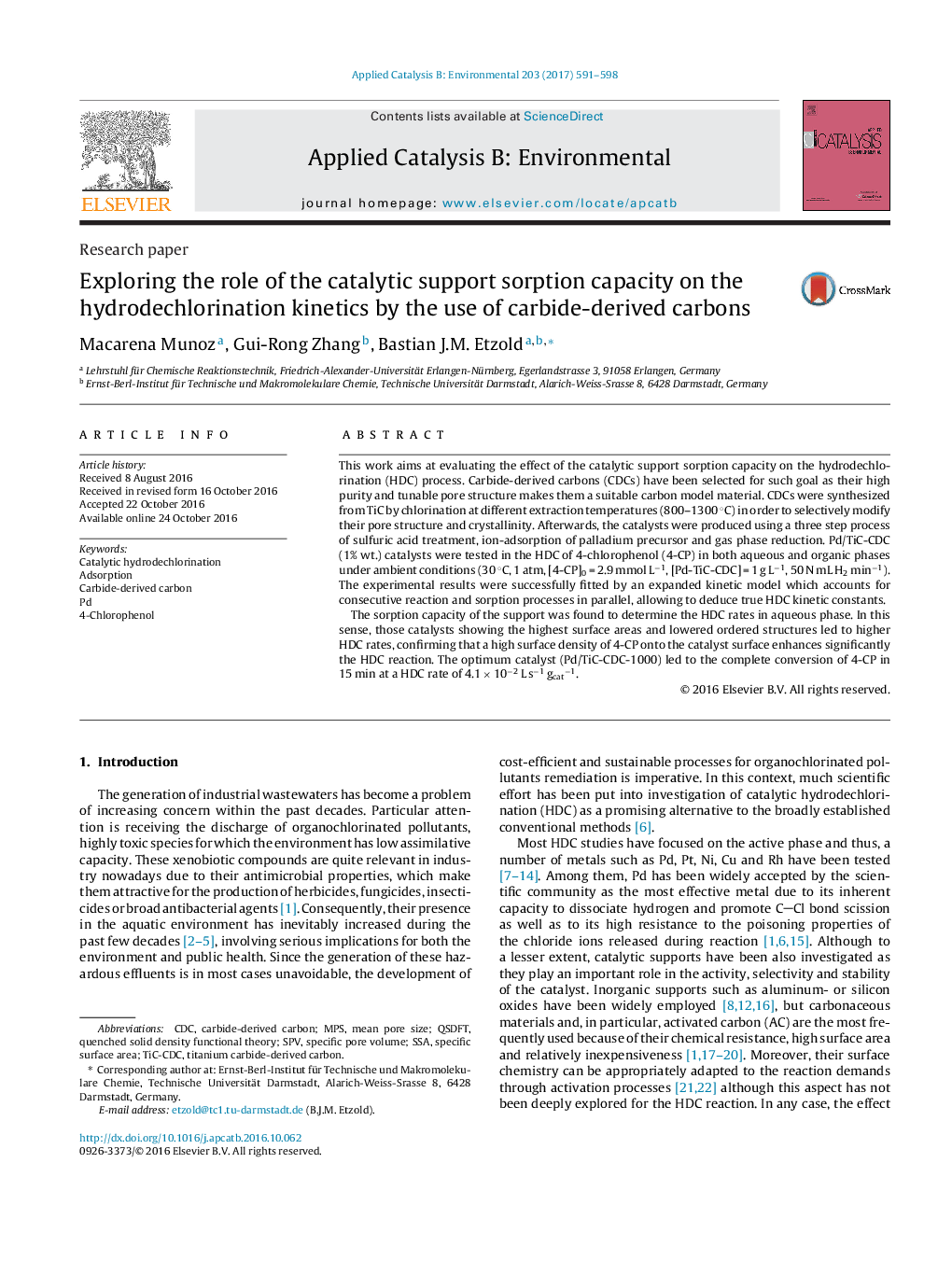| کد مقاله | کد نشریه | سال انتشار | مقاله انگلیسی | نسخه تمام متن |
|---|---|---|---|---|
| 6454527 | 1418817 | 2017 | 8 صفحه PDF | دانلود رایگان |
- Well-defined model carbons were used to evaluate the influence of sorption processes.
- The sorption capacity of the carbon support was found to determine the HDC kinetics in aqueous phase.
- A high surface density of 4-CP onto the catalyst surface enhances significantly the HDC reaction.
- The specific surface area and the crystallinity of the support are determinant for HDC kinetics.
This work aims at evaluating the effect of the catalytic support sorption capacity on the hydrodechlorination (HDC) process. Carbide-derived carbons (CDCs) have been selected for such goal as their high purity and tunable pore structure makes them a suitable carbon model material. CDCs were synthesized from TiC by chlorination at different extraction temperatures (800-1300 °C) in order to selectively modify their pore structure and crystallinity. Afterwards, the catalysts were produced using a three step process of sulfuric acid treatment, ion-adsorption of palladium precursor and gas phase reduction. Pd/TiC-CDC (1% wt.) catalysts were tested in the HDC of 4-chlorophenol (4-CP) in both aqueous and organic phases under ambient conditions (30 °C, 1 atm, [4-CP]0 = 2.9 mmol Lâ1, [Pd-TiC-CDC] = 1 g Lâ1, 50 N mL H2 minâ1). The experimental results were successfully fitted by an expanded kinetic model which accounts for consecutive reaction and sorption processes in parallel, allowing to deduce true HDC kinetic constants.The sorption capacity of the support was found to determine the HDC rates in aqueous phase. In this sense, those catalysts showing the highest surface areas and lowered ordered structures led to higher HDC rates, confirming that a high surface density of 4-CP onto the catalyst surface enhances significantly the HDC reaction. The optimum catalyst (Pd/TiC-CDC-1000) led to the complete conversion of 4-CP in 15 min at a HDC rate of 4.1 Ã 10â2 L sâ1 gcatâ1.
329
Journal: Applied Catalysis B: Environmental - Volume 203, April 2017, Pages 591-598
